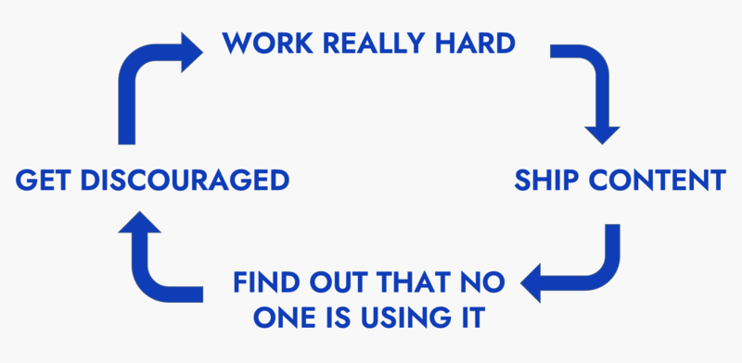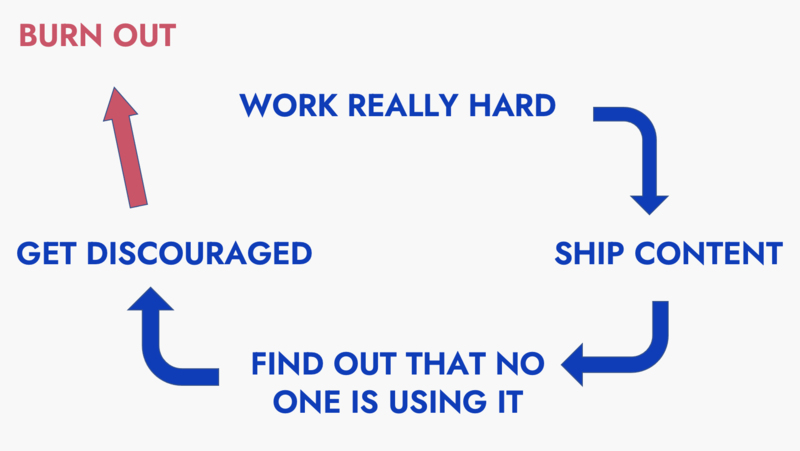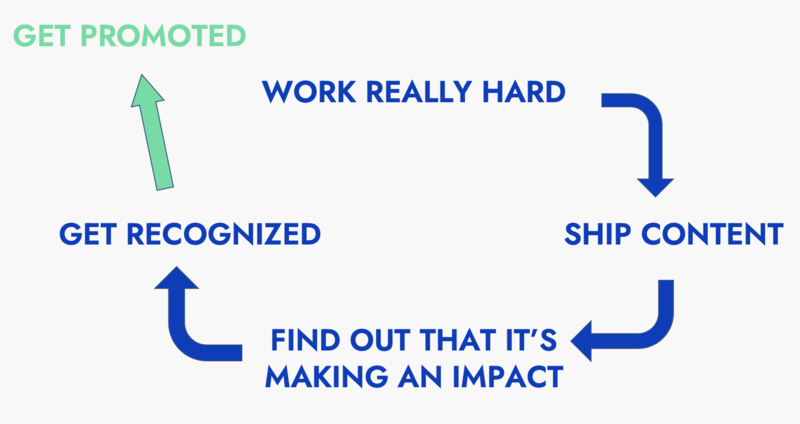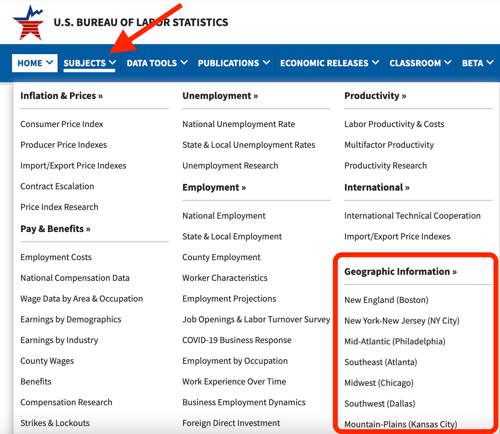A lot of smart, creative people have taken the lead on competitive intelligence and found themselves trapped in a vicious cycle:

It’s not an infinite cycle, of course—it does, eventually, come to an end:

To break this cycle, you have to answer a question: Why is no one using the content I give them?
Generally, there are three answers to this question:
- They don’t think they need it.
- It’s not easily accessible.
- It’s not relevant.
The world’s best CI programs make relevant insights easily accessible to enthusiastic consumers.
You can do the same. You can create a world-class CI program. You can break the cycle.

Ready to take your first step?
Introducing the Architect certification course
In February, we launched Crayon Academy with the Activator certification course: an introduction to CI for B2B companies.
Today, you can enroll in the Architect certification course: a guide to creating a meaningful and measurable CI program.
Created in collaboration with Sam Rinaldo, Senior Market Intelligence Analyst at ZoomInfo, the Architect course consists of four lessons:
- The 3 Pillars of a Successful CI Program
- Making the Case for an Official CI Program
- Creating a Competitive Culture
- Making the Case for a CI Software Tool
By the time you finish that fourth lesson, you’ll be well-equipped to make a long-lasting impact on your company—an impact that everyone, including those in the C-suite, can see and understand.
Just like the Activator course, the Architect course is 100% free. And upon your completion of the course, you’ll be awarded a certificate that you can add to your LinkedIn profile with just two clicks.

Cool? Cool. Enroll in the Architect course today.

Related Blog Posts
Popular Posts
-
 How to Create a Competitive Matrix (Step-by-Step Guide With Examples + Free Templates)
How to Create a Competitive Matrix (Step-by-Step Guide With Examples + Free Templates)
-
 The 8 Free Market Research Tools and Resources You Need to Know
The 8 Free Market Research Tools and Resources You Need to Know
-
 Sales Battlecards 101: How to Help Your Sellers Leave the Competition In the Dust
Sales Battlecards 101: How to Help Your Sellers Leave the Competition In the Dust
-
 6 Competitive Advantage Examples From the Real World
6 Competitive Advantage Examples From the Real World
-
 How to Measure Product Launch Success: 12 KPIs You Should Be Tracking
How to Measure Product Launch Success: 12 KPIs You Should Be Tracking




